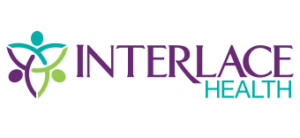So, What Exactly is the “Interlace” in Interlace Health?

I asked Microsoft CoPilot for a definition of ‘Interlace in healthcare’ and part of the answer was the following:
“In healthcare, interlace can relate to interconnected systems, such as medical devices communicating with each other or sharing patient data.”
“For example, an interlaced system might involve a patient’s wearable fitness tracker syncing data with their electronic health record (EHR) system.”
Within our product offerings, an Interlace provided by our platform can interweave different products, technologies, and people. This leads to more connected and streamlined processes. An Interlace focused on the Informed Consent process, for example, involves a patient (or guardian in some cases), and a nurse and/or physician participating in a streamlined eConsenting workflow.
Why did we change our name from FormFast to Interlace Health?
In 1992, FormFast was created at its core to greatly improve how organizations managed healthcare forms and ultimately the information that drives their business and leads to better patient care. While this mission remains today, at that time, this meant replacing printed forms with a library of forms that could be printed on demand. Hospitals saved money by only printing forms as they were needed, eliminating the need to throw out unused, out-of-date forms. Savings were also gained by not having to take up square footage to store all these forms and compliance was improved by making sure the forms being used were current and supporting hospital requirements and government regulations.
While this capability remains within the Interlace Health platform, as time passed, healthcare, technology, and patient expectations evolved – and so did our company. Over the years, we went from selling to individual hospitals to health systems with a broad range of care settings including ambulatory clinics, imaging centers, skilled nursing facilities, home healthcare and of course short-term acute care. We went from simply providing a library of forms, to being able to create packets of registration forms automatically, capture electronic signatures and store completed forms back to the EHR.
Clients requested the ability to pre-populate forms from the electronic health record, capture discrete data and export it back into the EHR, data lakes, or other destinations. We are now expected to integrate with payment processing systems, email, and text messaging services and fax systems.
The integration of products, data, and people really is an “Interlace”, not simply an add-on application. By connecting these various products and capabilities into streamlined workflows, we have evolved from simply making forms available quickly (FormFast) into Interlace Health.
We simply grew beyond “an eForms company”, as we now contribute to:
- Improving patient and provider interactions
- Reducing burnout for healthcare workers amidst staffing shortages
- Improving the financial picture for systems under severe stress
- Enhancing an organization’s investment in their EHR
- Ensuring compliance
Another example of an Interlace is Pre-registration or Remote Patient Intake. Once a patient has scheduled a visit to the doctor or hospital, a customized packet of forms is delivered based on the nature of the visit. These forms include pre-populated data from the EHR and can be completed on the patient’s own phone, tablet, or computer before their appointment. These forms are delivered via email or SMS message and do not require the patient to be pre-registered in a portal.
Patient-completed forms are automatically sent back to the health system for archival. In addition, the discrete data collected is available for use by areas such as revenue cycle and clinical departments. Interlace’s pre-registration workflow also allows co-pays to be collected and posted even before the visit. Automated reminders about the visit and completion of the forms are also sent via SMS or email, reducing no-shows and allowing the patients to avoid spending time in the waiting room completing paperwork.
This one Interlace between patients, staff, EHR and Practice Management software saves staff time. Errors related to staff’s inability to read handwriting or mistyping information is reduced. The revenue cycle is accelerated when the co-pay is collected in advance of the visit, versus hoping the person at the front desk captures it at the time of visit. Overdue balances can be shared discreetly with the patient prior to their visit, and payment plans can be offered.
The pre-registration Interlace also improves the patient experience by eliminating the need to re-enter demographic information over and over again, and providing the ability to complete forms on a familiar device, at a time that is convenient rather than in a waiting room full of other patients.
To effectively deliver a workflow that meets the expectations of all stakeholders, Interlace Health identifies client goals during pre-sale discovery sessions, follows a well-thought-out implementation plan, and maintains ongoing communication to ensure optimization of that workflow. An effective Interlaced workflow is more than just software, it’s the joint effort between the client and Interlace staff to ensure its properly configured, trained on, and supported.
While we may look different today than we did in 1992, our goal has always been to transform healthcare processes, allowing organizations to focus more on people over paperwork. Find out how we can help your organization do just that by Interlacing your Forms on Demand, Patient Intake and Consenting workflows. Schedule a DEMO today.
About the Author:

Art Nicholas, Chief Commercial Officer at Interlace Health, has over 20 years of experience in launching and expanding technologies in the healthcare field. He was a pioneer in getting speech recognition used by both doctors and nurses in inpatient and outpatient settings. In every role, his teams have successfully implemented automated workflows which benefit patients, providers and the healthcare ecosystem. A strong believer in the healthcare IT community, he has been an active member of CHIME, HIMSS, and MUSE, sitting on a number of their committees. He is committed to improving the quality of patient care and lowering the cost of care delivery through well-designed and well-supported technology workflow solutions. Follow Art on LinkedIn.
Download eBook: How Healthcare Teams Can Leverage Digitized Forms




